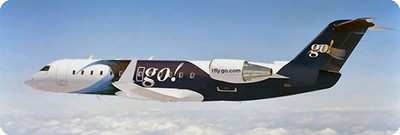Mesa Airlines Hawaii Flight Spurs Call For Tracking OSA In
Commercial Pilots
 In a recently-released
final report concerning a Mesa Airlines flight operating as go!
Airlines in Hawaii, it was determined that the pilot acting as
captain of the aircraft and the first officer both inadvertently
fell asleep in flight, causing the airplane to overshoot its
destination by 26 miles. As part of the investigation it was
determined that the captains' sleep schedule had been interrupted
by previously undiagnosed obstructive sleep apnea (OSA).
In a recently-released
final report concerning a Mesa Airlines flight operating as go!
Airlines in Hawaii, it was determined that the pilot acting as
captain of the aircraft and the first officer both inadvertently
fell asleep in flight, causing the airplane to overshoot its
destination by 26 miles. As part of the investigation it was
determined that the captains' sleep schedule had been interrupted
by previously undiagnosed obstructive sleep apnea (OSA).
According the information released by the NTSB, if a commercial
pilot is diagnosed with OSA, the Federal Aviation Administration
(FAA) 2006 Guide for Aviation Medical Examiners states that an
aviation medical examiner (AME) must submit all pertinent medical
information and current status report and include sleep study with
a polysomnogram, use of medications and titration study [in which
the optimal pressure for CPAP is identified] results. The guidance
further notes that an initial special issuance of a medical
certificate for the disorder requires an FAA decision. Subsequent
issuance of a medical certificate may be authorized through the AME
if the applicant provides a report performed in the last 90 days
from the treating physician that describes the present treatment
and its effectiveness in eliminating or reducing symptoms,
including daytime sleepiness. A maintenance of wakefulness test is
required if there is any question about compliance with or response
to treatment, and the AME must defer the certification decision if
the individual demonstrates sleep deficiency on a maintenance of
wakefulness test, has developed an illness associated with OSA, or
if there is doubt about compliance with or effectiveness of
therapy. Treatment can only begin, however, after diagnosis, and
there is evidence that certificated commercial pilots are
significantly underdiagnosed.
The FAA does not provide guidance to AMEs describing risk
factors for OSA, nor does the FAA routinely use medical information
(such as height, weight, and blood pressure) collected during
certification examinations to screen for the possible presence of
the disorder. Furthermore, the Application for Airman Medical
Certificate asks applicants about their history of over 20 specific
conditions or symptoms but does not specifically ask about a
history of OSA or the presence of symptoms, such as snoring or
excessive daytime sleepiness, related to OSA.

Except for the FAA, every U.S. Federal agency that oversees
passenger transportation either gathers or plans to gather
subjective information specific to OSA from transportation
operators. By contrast, the FAA is not yet formally considering
such changes. Objective medical data already gathered by the FAA
could be used to measure risk for OSA using existing consensus
guidance on screening, but the most effective screening would
require the FAA to gather additional information and develop
additional guidance.
The NTSB concludes that efforts to identify and treat the
disorder in commercial pilots could improve the safety of the
traveling public. Therefore, the NTSB recommends that the FAA
modify the Application for Airman Medical Certificate to elicit
specific information about any previous diagnosis of OSA and about
the presence of specific risk factors for that disorder. The NTSB
further recommends that the FAA implement a program to identify
pilots at high risk for OSA and require that those pilots provide
evidence through the medical certification process of having been
appropriately evaluated and, if treatment is needed, effectively
treated for that disorder before being granted unrestricted medical
certification. In addition, the NTSB recommends that the FAA
develop and disseminate guidance for pilots, employers, and
physicians regarding the identification and treatment of
individuals at high risk of OSA, emphasizing that pilots who have
OSA that is effectively treated are routinely approved for
continued medical certification.
 Airbus Racer Helicopter Demonstrator First Flight Part of Clean Sky 2 Initiative
Airbus Racer Helicopter Demonstrator First Flight Part of Clean Sky 2 Initiative Diamond's Electric DA40 Finds Fans at Dübendorf
Diamond's Electric DA40 Finds Fans at Dübendorf ANN's Daily Aero-Term (04.23.24): Line Up And Wait (LUAW)
ANN's Daily Aero-Term (04.23.24): Line Up And Wait (LUAW) NTSB Final Report: Extra Flugzeugbau GMBH EA300/L
NTSB Final Report: Extra Flugzeugbau GMBH EA300/L Classic Aero-TV: 'Never Give Up' - Advice From Two of FedEx's Female Captains
Classic Aero-TV: 'Never Give Up' - Advice From Two of FedEx's Female Captains




